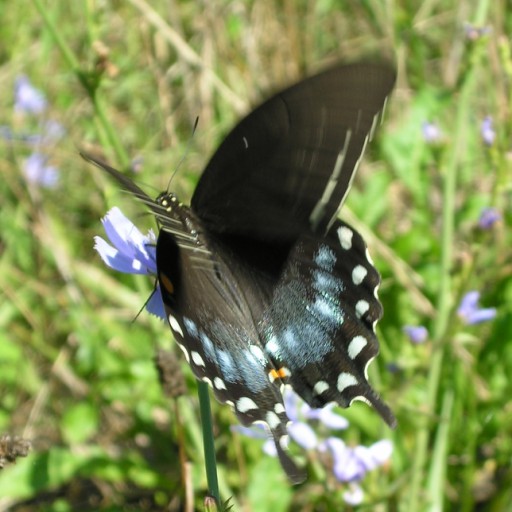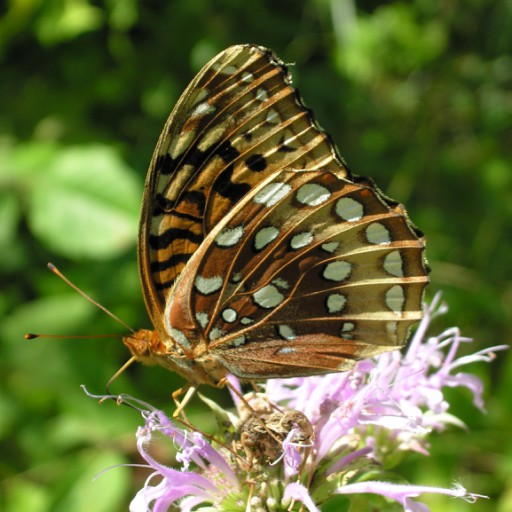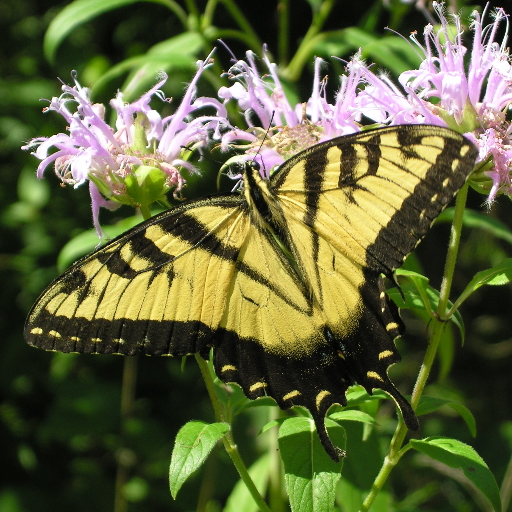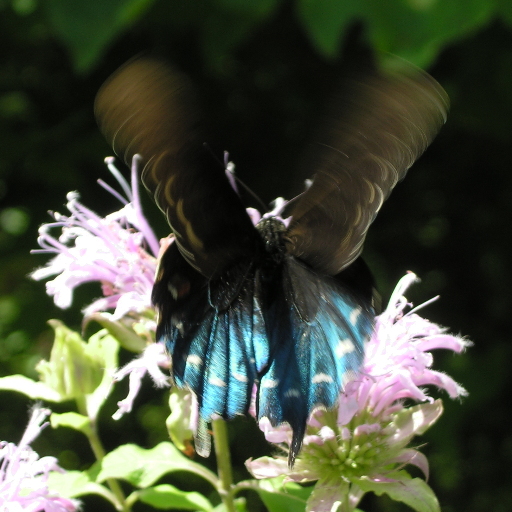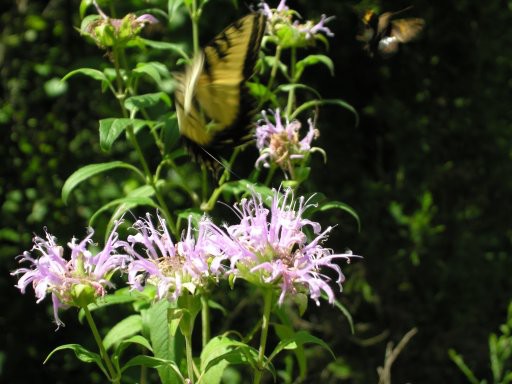
This patch of monarda at the #1 trailhead proved to be superb for attracting flying fauna...I rather like the way the flowers are in sharp focus, but the butterflies’ wings are blurred. 1/204s, f/4.9, 10:31 in the morning.
I shot the bulk of these pictures while parked at a patch of monarda near the trailhead of trail #1. After standing there awhile, the insects got used to me, and allowed me to get close to photograph them. This was a case in which brilliant mid-day sun worked to my advantage—it helped to freeze the motion of the animals somewhat, but the macro-focus kept from washing out their color (because you need a lot of light when the lens gets very close to the subject), and the short depth of field rendered the background suitably unobtrusive. All the images were taken with a coolpix 8400 set to fine (highest .jpg) quality, white balance to fine (sunny), aperture priority.
This picture was taken along the service drive that accessed the various campgrounds, picnic areas and the like. It was great that I could just stop my car in the middle of the main park road, put on blinkers, and chase (rather comically, I might add) after big black butterflies, who weren't all that keen on this galumphing creature following them around as they sampled the roadside chicory. Most of the time the exposure bias is neutral.[1]
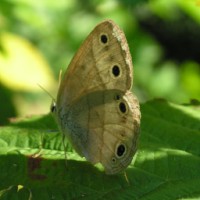
This little beastie was hiding in a patch of bushes along trail #2; cropped out were some blackberry bushes, which I quite unashamedly sampled. The real treasure for those was at Loramie State park, where I stopped for lunch and a nap on my out to Kentucky—the sun-warmed and glorious taste must once have been a common summer pleasure for people on farms a hundred years ago. 1/145s, f/4.9, 10:36
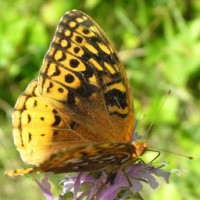
Fritillary, of some sort, I do believe. Since the same three monarda flowers pretty much serve for the rest of the series, they give a sense of scale. Thus, this butterfly, while respectably sized, can't match the majestic swallowtails.1/160s, f/4.9 28jul05, 12:29pm
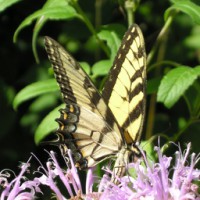
Just for something a little different. (Say, for those garden catalogs that photoshop in butterflies on their flowers, here's one that might be a little more convincing...:) 1/240s, f/4.9, -0.3 exposure bias
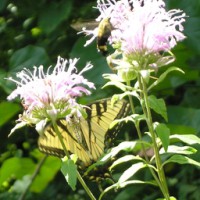
I like this shot just because it shows a bee and a butterfly, both very fond of our native beebalm. They like the more brightly colored red and magenta cultivars, which I have in my garden, just as well. And, sigh, even with 1/3 stop darker, the flowers are still washed out. (The camera monitor tends to wash things out, so it can be tricky to judge this.) 1/91s, f/4.9, -0.3 ev
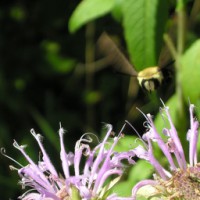
Another classic-style shot, of a bee coming in for a landing. This is a result of me clicking away as fast as I can, and some luck, not any particular compositional skill. Hurray for autofocus. 1/274s f/4.9 -0.3ev
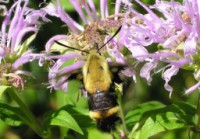
I put this picture in because it shows the shape of the bumblebee's
body—very strange and elongated, compared to our round, fat Michigan
bumblebees. 2014 update: Actually, it's a hummingbird moth. 1/301s, f/4.9 -0.3ev
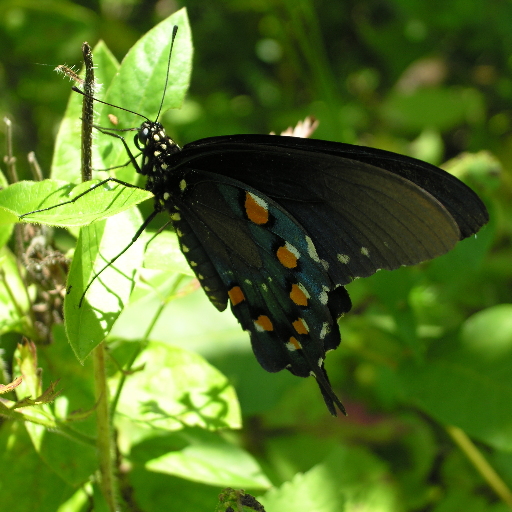
A side view of the black (female dark morph of the tiger) swallowtail that begins the series. Thank goodness I moved the exposure compensation back to zero, with those dark wings! 1/123s, f/4.5
At first I just assumed this was the same species as the black swallowtail, above. Then I noticed how much more blue it has on its lower wings, and figured I'd shot something different. It still has the white spots, so maybe the pattern is more variable than, say, for monarchs.[2] At any rate, I like the way the upper wings blurred a bit, reminding of similar butterflies I shot in Vietnam (but have yet to post.)
Return to the main Charlestown State park post. file created 05052005
[1]2014 update: these are the black morph of female Eastern Tiger Swallowtails. Wikipedia reports that these animals get bigger further south , and I'd say their blue markings would appear to get more dramatic as well.
[2]Obviously, since we know already there are two morphs, and a google image search will reveal a number of specimens that vary between the extremes; besides which wikipedia informs us that the three major species of tiger swallowtails interbreed at their habitat boundaries.
Unless otherwise noted, text, image and objects depicted therein copyright 1996--present sylvus tarn.
Sylvus Tarn